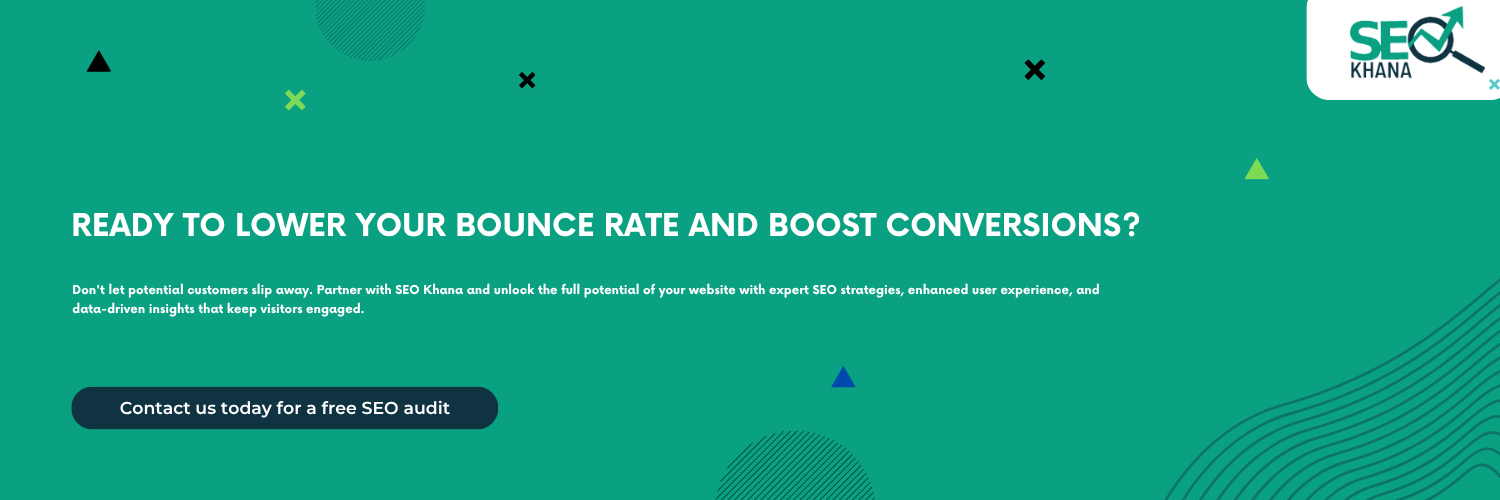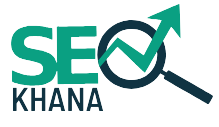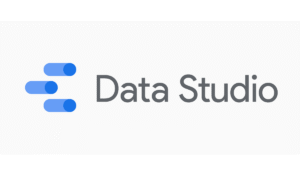In today’s digital marketing landscape, understanding how users engage with your website is essential to long-term success. One key performance indicator that sheds light on visitor behavior is the rate at which users exit your site without interacting further. But what does this metric really indicate — and why is it so important for website owners and SEO professionals?
This percentage of Bounce Rate reflects how many users leave after viewing just one page. A high value here can suggest issues with content relevance, poor user experience, or even targeting the wrong audience segment. But does it have a direct impact on your site’s ranking in search engine results?
In this article, we’ll break down the meaning behind this metric, explore its connection to SEO performance, highlight common reasons it may spike, and offer actionable strategies to keep users engaged and improve site effectiveness.
And if you’re serious about taking your SEO efforts to the next level, SEO Khana is your trusted partner — offering expert solutions designed to increase engagement, reduce early exits, and deliver measurable results.
What is Bounce Rate?
bounce rate meaning is a metric used in web analytics to measure the percentage of visitors who land on a webpage and leave without taking any further action — such as clicking on a link, filling out a form, or navigating to another page within the same site.
A user session is counted as a “bounce” when a visitor lands on a page and leaves without taking any further action. This metric is calculated using the formula:
Average Bounce Rate = (Single-Page Sessions / Total Sessions) × 100
For instance, if 100 people visit your site and 60 of them exit after viewing just one page, the result would be a 60% rate.
This percentage is often used as an indicator of user engagement—or the lack thereof. A high value may suggest that the content isn’t resonating with visitors, while a lower percentage typically indicates deeper interaction and greater interest in your offerings.
However, interpretation depends on context. Certain types of pages—like blog articles, landing pages, or contact information pages—may naturally have higher exit rates if users find what they need right away. That’s why it’s important to analyze this metric in context to make smarter decisions about both SEO and user experience.
learn more about: core web vital
Does Bounce Rate Affect SEO Rankings?
This commonly discussed metric in SEO highlights how visitors behave when they land on your website. In essence, it shows the proportion of users who leave after viewing a single page without interacting further. Many wonder whether this has a negative impact on search engine rankings.
While it doesn’t directly affect your position on platforms like Google, a consistently high value can signal poor user experience or irrelevant content—factors that indirectly influence your SEO performance. Search engines aim to deliver the best possible results, and if users quickly leave your site without engaging, it may suggest your content isn’t meeting their needs.
That said, context is everything. Sometimes, a quick visit that satisfies a user’s intent—such as finding a contact number or reading a blog post—can still indicate a successful interaction, even if no further clicks occur.
In conclusion, although bounce rate isn’t a direct ranking factor, it’s a valuable metric to monitor and analyze as part of your broader strategy for improving website engagement and performance.

Common Reasons for a High Bounce Rate
A high bounce rate can be caused by several factors that affect how visitors interact with your website. Understanding these reasons helps in identifying issues and improving user experience:
- Slow Page Load Time: If your website takes too long to load, visitors may leave before even seeing your content.
- Poor Mobile Optimization: With more users browsing on mobile devices, a website that isn’t mobile-friendly can drive visitors away quickly.
- Irrelevant Content: If visitors don’t find what they expected or what they’re searching for, they will likely leave immediately.
- Complicated Navigation: A confusing layout or difficult-to-use menus can frustrate users, causing them to exit your site.
- Intrusive Ads or Pop-ups: Excessive or annoying advertisements can distract and deter visitors from staying.
- Technical Errors: Broken links, 404 errors, or malfunctioning features reduce the site’s usability and push visitors away.
By addressing these common issues, you can lower your bounce rate and improve overall engagement and SEO performance. Learn how a content optimization service company can help you transform underperforming pages into high-converting assets.
How to Reduce Bounce Rate and Improve User Experience
Understanding the bounce rate definition is essential before exploring ways to decrease it. This metric, which measures the percentage of visitors who leave a website after viewing only one page without further interaction, is a key indicator of user engagement. Platforms like bounce rate google analytics provide detailed reports that help analyze this behavior, giving insights into how users respond to the site’s content and design.
An unusually high exit rate from a website may suggest that visitors are not finding the information they expected or that the overall experience does not meet their needs. The average bounce rate varies depending on industry standards and website types, making it important to compare performance with similar sites.
To address this challenge, several effective techniques can be implemented:
- Enhancing page load times to ensure content appears quickly and keeps visitors engaged.
- Ensuring the website is fully optimized for mobile devices, offering seamless navigation on all screen sizes.
- Providing relevant, valuable content tailored to the audience’s intent, which encourages further exploration.
- Designing intuitive navigation and clear calls-to-action that gently guide users through the site.
- Minimizing intrusive advertisements and pop-ups that might disrupt the user journey.
By regularly monitoring this metric through Google Analytics and applying these best practices, website owners can improve user retention, encouraging visitors to interact more deeply with the site and ultimately boosting SEO performance.
Tools to Measure and Analyze Bounce Rate
Understanding how visitors interact with your website is key to creating a successful online presence. Without clear insights, it’s challenging to identify why users might leave after viewing just one page or how to keep them engaged longer. That’s where specialized tools come in. By accurately measuring and analyzing visitor behavior, these tools empower website owners and marketers to make informed decisions, optimize content, and improve overall user experience.
In this section, we will explore some of the most effective tools available today to track and analyze exit rates, helping you unlock the full potential of your website and boost its performance.
Google Analytics
The most popular and comprehensive tool for tracking website metrics. It provides detailed data on website bounce rate, user sessions, traffic sources, and behavior flow. Google Analytics helps identify pages with high exit rates and analyze visitor engagement to inform improvements.
Hotjar
A user behavior analytics tool that offers heatmaps, session recordings, and feedback polls. Hotjar visually shows where visitors click, how far they scroll, and how they navigate the site, helping to pinpoint user experience issues that may cause high bounce rates.
Crazy Egg
Similar to Hotjar, Crazy Egg provides click tracking, scroll maps, and A/B testing features. It helps website owners understand which elements attract attention and which cause frustration, enabling data-driven design adjustments to reduce bounce rates.
Adobe Analytics
A powerful enterprise-level analytics platform that offers deep insights into customer behavior across multiple channels. It provides advanced segmentation and conversion tracking, allowing businesses to analyze and optimize the user journey to lower bounce rates effectively.
Mixpanel
Focused on user interaction tracking and funnel analysis, Mixpanel helps measure engagement and conversion events. It enables detailed tracking of user actions beyond page views, which is valuable for identifying drop-off points and improving retention.
How SEO Khana Helps You Reduce Bounce Rate and Improve Website Performance
As the best SEO company for businesses seeking real growth, SEO Khana takes a strategic approach to reducing bounce rates and improving overall website performance. With a deep understanding of user behavior and search engine algorithms, the company delivers tailored SEO services that focus on enhancing both technical and content-related aspects of your site.
Through our technical SEO audit service, we identify performance bottlenecks, page speed issues, and mobile usability problems—common causes of high exit rates. Our on-page SEO optimization ensures that each page is relevant, engaging, and properly structured to match user intent, which helps keep visitors exploring longer.
For businesses targeting specific regions, our local SEO expert team ensures your site is optimized to appear in relevant local searches—driving more qualified traffic and improving retention. And for e-commerce websites, we implement advanced strategies to create smoother shopping experiences, reducing drop-offs and increasing conversions.
With SEO Khana, you’re not just improving metrics like bounce rate—you’re building a stronger, more effective online presence that supports your long-term business goals.
Conclusion:
Understanding what bounce rate is and how it impacts your website is essential for any successful digital strategy. A high exit rate often signals deeper issues with user experience, content relevance, or site performance. By analyzing data through tools like Google Analytics, implementing effective on-page SEO optimization, and partnering with experts, you can turn those insights into real improvements.
At SEO Khana, we combine proven SEO techniques with a deep understanding of user behavior to help businesses reduce bounce rates, improve engagement, and increase conversions. Whether you run a blog, a service website, or an e-commerce platform, optimizing for better performance starts with smart decisions — and the right team.
Let SEO Khana be your guide to a more engaging, high-performing website that delivers results.






